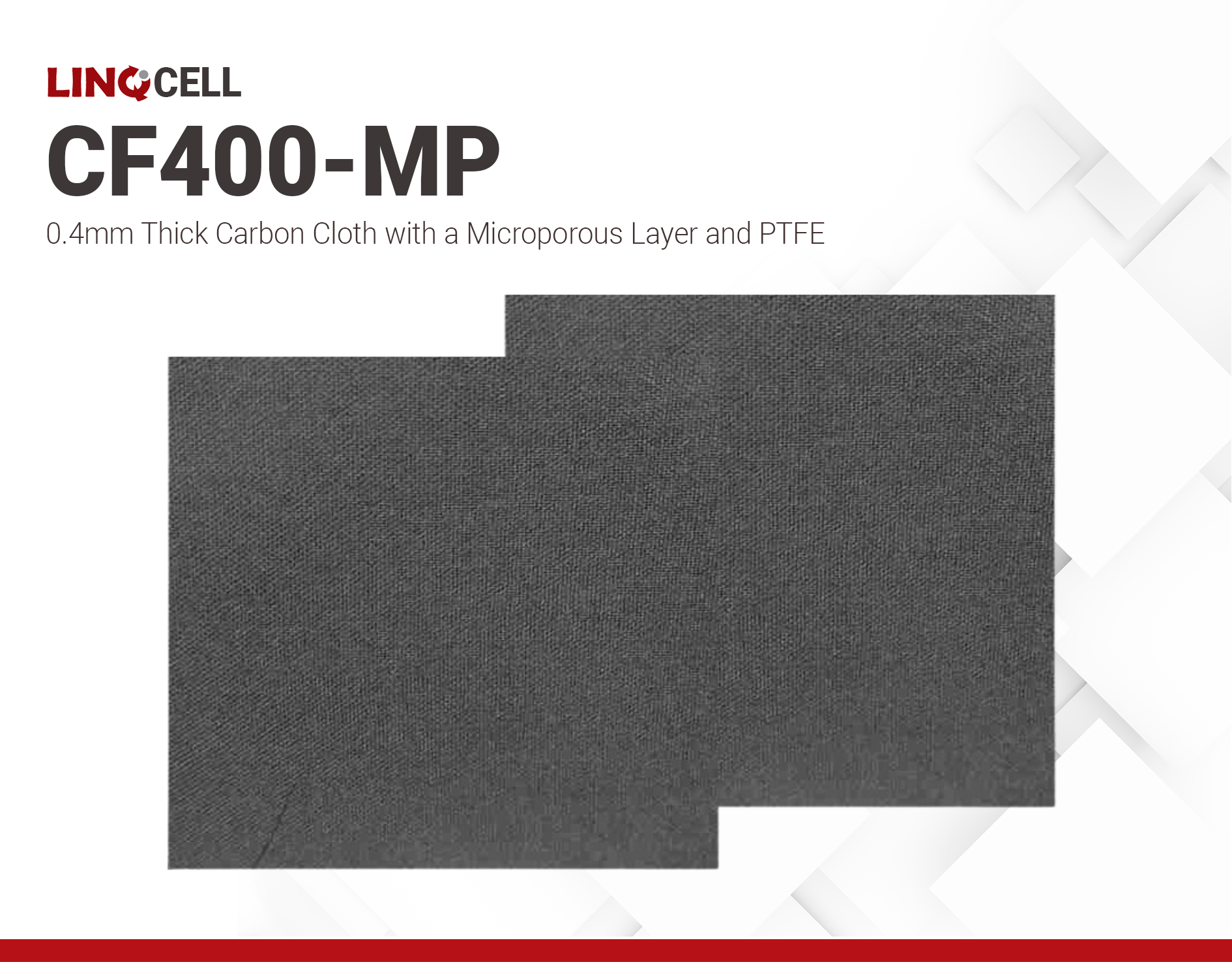LINQCELL CF400-MP | 400um Carbon Fabric
- 0.4mm - 400um - 16mil
- Comes in roll form
- 13 TP Resistance
Product Description
LINQCELL CF400-MP is a 0.4mm thick carbon cloth with a Microporous layer and PTFE. It is commonly used as a gas diffusion layer and electrode for fuel cells. Its through-plane resistivity is less than 13 mΩcm2.
LINQCELL CF400-MP is typically used in PEM fuel cells as well as PA and DM fuel cell applications as a gas diffusion layer. These thinner gas diffusion layers offer good electrochemical performance and can also lend themselves to AEMFC GDL Anodes. Thickness has more sensitivity to the AEMFC when used in the anode electrode rather than in the cathode electrode, indicating that water removal at the anode was more challenging than water supply at the cathode so the strategy of water management among electrodes should be differentiated.
Carbon cloth based GDLs have performance equal to that of conventional carbon papers. Carbon cloth is more practical than carbon paper because of its superior compressibility, elasticity, and flexibility performance, making it more appropriate for ongoing manufacturing and assembly processes. Carbon cloths with a Microporous layer can achieve the required performance and provide an alternative option to carbon paper as GDL.
Technical Specifications
| General Properties | |
| Basis Weight Basis Weight Basis weight refers to the weight measured in pounds off 500 sheets of paper in that paper’s basic sheet size. | 200 g/m2 |
| Total Thickness Total Thickness Total thickness is taking into account all the films, coatings, adhesives, release liners and special layers and is the maximum thickness of a film or tape. | 410 μm |
| Mechanical Properties | |
| Tensile Strength (Thin Film) Tensile Strength (Thin Film) Tensile strength determines the resistance of a material to break under tension and it measures how much elongating load (or tensile stress) it can handle before fracture. To make it simple, it measures how much force we have to apply when pulling apart a material before it breaks. | 10 N/cm |
| Electrical Properties | |
| TP Resistance TP Resistance Opposition to the flow of electric current. | 13 mΩcm2 |



